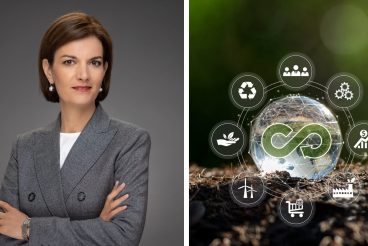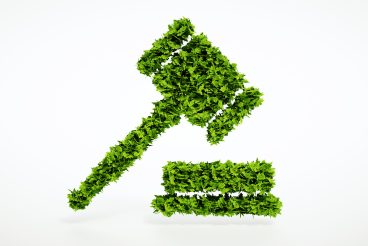
The question above is one that many are asking. As sustainability and ESG increasingly rise to the top of most organisations’ priorities, the number of initiatives aiming to harmonise standards and definitions on a worldwide basis are rising as well.
At the same time, however, various countries are creating ESG tools such as green taxonomies that are unlikely to be identical. An early warning sign: the UK’s decision to adopt approaches to sustainability regulation that differ from those of the EU.
Consequently, many finance sector professionals are in a dilemma over how to comply with a range of divergent and perhaps conflicting rulebooks.
To help with answers, we sat with Patrick Levaldaur for the latest interview in our Sustainability Matters series. Patrick is General Secretary of the European Financial Planning Association Luxembourg, a professional standards setting body for financial advisors and planners in Europe that provides certifications for financial centres and their staff.
To what extent do divergence in sustainability standards and rulebooks contribute to greenwashing?

Discrepancies between sustainability standards and rules can contribute to greenwashing in a variety of ways. At the global level, we are now seeing different taxonomies emerge in terms of investment and sustainable activity. The European Union’s is undoubtedly the most advanced of those taxonomies.
While these different international standards attempt to address climate change, they do not necessarily provide the same answers, constraints or limits – all of which depend on local economic issues.
In fact, economic actors (for example, investors and companies) are gradually bending to the constraints of their areas, which makes sense. However, because benchmarks and criteria are not harmonised globally, what is considered “sustainable” in one area may not be considered as such in another.
What this means is that European investors seeking to invest in the United States, for instance, may not respect their local taxonomy on an American product denominated as “sustainable” as long as this product meets US standards (which differ from Europe’s).
Ultimately, if the investors are not careful, they can unintentionally fall guilty of greenwashing, and its certain reputational risk.
At the local level, the lack of common and precise definitions can lead to similar greenwashing issues because of how much room is left to interpretation. Today, asset managers themselves declare whether an investment product responds to a particular article of the Sustainable Finance Disclosure Regulation (SFDR). This self-declaration allows asset managers to indicate whether a product is compatible with Article 6, 8 or 9 of this standard.
Thus, interpretation of what can be considered sustainable or not varies from one asset manager to another, from one auditor to another, or even from one regulator to another, all of which can generate significant vagueness and allow for greenwashing.
Do these differences constitute an obstacle to the development of financial products related to sustainable development and to investment in these products? What challenges do they pose for financial advisors?
Note well that finance remains a transmission belt of capital to other economic activities. If the industries in which capital is invested are not sustainable, then their sources of finance can’t be either, at least in the eyes of the general public. The divergence of views automatically generates a blur around sustainable finance, and therefore mistrust by the general public.
In such cases, especially, is where sustainable finance must be explained and where the financial advisor, an essential link between the financial world and the general public, must be better equipped. Hence, training effort from retail banking to private banking must be improved to better educate and inform end customers.
There are many important questions that require answers for the proper development of financial products related to sustainable investment: Can finance be described as “sustainable” if it does not aim to limit global warming to +1.5°C (in accordance with the Paris Agreement)? How can we find a global temperature rise of +1.5°C sustainable when we are now at +1.2°C? How can a product classified as Article 8 under SFDR finance unsustainable activities for the general public (gold mining, oil activity…)? What is engagement? ESG? Sustainable Development Goals (SDGs) as set by the United Nations?
The list goes on…
These types of questions are essential for sustainable finance to gain the trust of the general public and reduce reputational risk as much as possible. Trust from the retail customer is critical for sustainable finance to play a role in the battle against global warming. Good intentions will not be enough. Transparency vis-à-vis the end customer will be paramount in the acceptance of sustainable finance, especially for a sector often plagued by criticism.
Can the EU’s green taxonomy become an international “gold standard”?
The EU Taxonomy is a classification system for economic activities that contributes to environmental sustainability. It is designed to help companies and investors understand which activities are considered sustainable and make decisions accordingly.
Compared to other taxonomies, the EU’s is probably the most robust and advanced due to the fact that it is the result of discussions among various countries with diverse interests. It is extremely detailed despite the fact that it is still in development.
That said, it should not be seen as the only solution for environmental sustainability but, rather, as a useful tool among a wider set of measures to promote a more sustainable economy. Thus, it is simply a piece of a larger global puzzle that includes SFDR and the Corporate Sustainability Reporting Directive (CSRD).
The entry into force of the Regulatory Technical Standards (RTS) at the beginning of this year, which bring the obligation to identify the negative impacts of an investment, further adds to the high level of detail required in Europe. Meanwhile, the implementation of the European ESG Template (EET) will greatly assist financial advisors in the mission of educating the end customer.
It is the convergence of these various templates, standards and regulations that could inspire other parts of the world and make the European taxonomy a standard. By being ahead of the curve in this area, the EU will likely be seen as an example. However, it will not necessarily be copied because the EU taxonomy is designed to meet the union’s environmental sustainability needs and is therefore specific to this region.
If other countries and regions adopt a similar approach, then an international standard for environmental sustainability could be created.
What are the implications of a post-Brexit division of the regulatory approach between the EU and a leading world-focused European financial centre, the UK?
The implications of a post-Brexit split on the regulatory approach between the EU and the UK can be wide-reaching. First, a division leads to fragmentation of financial markets as the applicable rules and standards may differ. This could create obstacles for financial firms seeking to operate in both areas since they will have to comply with two different sets of rules.
This can also lead to regulatory competition between the EU and the UK, as each area can seek to attract financial firms by offering less restrictive regulations or more tax advantages. This could create a ‘race to the bottom’ in regulatory standards, which in turn could weaken financial stability, consumer protection and, above all, undermine the fight against climate change.

How will the different priorities of other leading sustainability countries – notably the US and China – influence the emergence of different standards and rules?
Sustainability priorities may vary depending on the specific environmental and social challenges each country faces. For example, the United States may place greater emphasis on reducing greenhouse gas emissions, while China may place greater emphasis on reducing air and water pollution.
Each country’s priorities will no doubt also be influenced by economic and political factors. While China may be more inclined to promote emerging industries such as renewables in order to drive economic growth, the United States, the world’s largest oil producer, may place more focus on protecting established industries such as oil and gas. This divergence in priorities can lead to the emergence of different sustainability standards and rules, as each country may seek to meet its specific needs.
Yet, it is also possible for countries to work together to establish common standards and rules, recognising that environmental challenges are global and require a collective response. Look at the EU as a good example. In our opinion, this will be one of the biggest challenges of respecting the Paris agreements and future COPs.
Will differences in the priorities of certain fossil fuels or other energy sources in different countries or regions – nuclear power in France, gas in other European countries, oil in the United States and coal in China – have an impact on international standards for sustainable development?
These differences in priorities will of course lead to different energy policies, which in turn can influence international standards.
For instance, in its prioritisation of nuclear energy France may seek to promote it as a low-carbon solution in European and international discussions on climate change. In the same vein, as stated above, when the US favours oil, it may seek to protect that industry and influence international standards to support its position.
It should be noted, though, that international standards for sustainable development are not determined solely by the priorities of each country or region. They are often established by international bodies such as the United Nations, which seek to promote global targets such as reducing greenhouse gas emissions and promoting renewable energy sources. The growing influence of emerging countries in international discussions will also play a role in tipping the balance for certain discussions.
In addition, it’s important to consider the fact that countries’ and regions’ energy priorities are liable to change over time. China, which is currently heavily dependent on coal, has announced plans to reduce coal consumption and increase renewable energy production — a shift that will no doubt have a variety of impacts at a local and international level. Similarly, technological developments can also significantly shake things up.
At the end of the day, we will have to be careful not to define standards that are too stringent. For example, the EU’s approach of asking players in the automotive sector to reduce the carbon footprint of their product mixes was highly effective. It pushed them to adapt their thinking and stimulated technological innovation. In this instance, we must ask whether it’s then appropriate to favour one technology (electric) while prohibiting another (the combustion engine)? The answer can only come from engineers and probably not from the financier, the politician or the bureaucrat. Only the engineers know if the evolution of the combustion engine — using new green fuel — will meet new environmental standards.
This is what I mean when cautioning that standards should not go too far or become too strict as they could hinder technological innovation. Germany’s throwback on the combustion engine is a good example of this. This concern should lead us to the question: what about nuclear power or other questionable technologies today? The choice must be up to the engineers, even if they may be constrained by an appropriate norm.
How should investors and their advisors manage these differences?
Investors must take into account the sustainability standards applicable to them when assessing their investments. As these standards are local, they must have a good understanding of the differences in standards among different zones when investing internationally. This remains essential to avoid unintentional greenwashing and the reputational risk that could result.
The differences in standards generally relate to the energy policies of different countries. An analysis of global energy trends can help anticipate changes in countries’ energy priorities and help investors identify investment opportunities in renewable energy sources.
Investors must also take into account government energy policies of these different regions. Government policies influence investments in certain energy sources and may also change as energy priorities or technologies evolve.
Investors should assess the risks associated with investing in specific energy sources – for example, investing in coal-related businesses, which may be considered risky due to increasing pressures to reduce greenhouse gas emissions.
The point of view of the advisor must take even more into account, considering the trends in the different areas where they invest and the local point of view of their client, which can be a difficult tightrope to walk.
How might the desire to develop more-or-less universally accepted rules of sustainability be affected by the geopolitical changes engendered and influenced by the war in Ukraine?
The countries involved directly or indirectly in the war in Ukraine have already shifted their economic and political priorities, which has led Europe to substantially alter its uses in terms of energy supply. Russia, meanwhile, has reoriented itself towards China and Africa.
Ultimately, this affects countries’ commitment to promote universally accepted sustainability rules. Could the United States and Russia, two of the world’s largest oil producers, sit at a table today to discuss climate change?
The last COP in Cairo also proved that countries are unfortunately less willing to engage in discussions on sustainable development issues and are more concerned with national security issues.
Geopolitical changes could also affect the distribution of power among international organisations involved in developing sustainability rules. Some countries or blocs could seek to strengthen their position within these organisations, as we are seeing today with the BRICS (Brazil, Russia, India, China and South Africa).
Similarly, countries may be less willing to collaborate on sustainable development issues if their political and economic relations are strained. This is found today between the United States and Saudi Arabia, which are less united than in the past (even as the US negotiates a treaty between Saudi Arabia and Israel).
International geopolitical tensions have made it more difficult to develop common sustainability rules by altering international economic and political priorities. However, it is important to continue to promote such rules despite these challenges. Environmental sustainability is a global issue that requires international cooperation to be resolved. The resulting environmental and social issues are far too important to be pushed back by geopolitical tensions.
What other global trends or developments are expected to influence the overall approach to sustainability and what questions will they pose to investors and their advisors?
The overall approach to sustainability will be influenced by multiple factors. The energy transition will undoubtedly be a major trend that will shape the future of sustainability. Investors are increasingly aware of the risks associated with fossil fuels and the growing importance of renewables for the future.
Urbanisation will also weigh heavily. Cities are responsible for much of the energy consumption and greenhouse gas emissions, but they can also offer innovative solutions for sustainability, such as green building and public transport.
Food security is also a growing concern around the world, as the impact of the war in Ukraine attests. As the world’s population continues to grow, investors need to be aware of the risks of intensive agriculture, deforestation, and the opportunities offered by more sustainable agricultural practices.
The emergence of more circular economies, more environmentally conscious production processes, and new technologies are also impacting our current industries. Investors will need to anticipate this in order to adapt their investments and benefit from the opportunities offered by these developments and by sustainable finance.
To what extent are financial advisors compelled to become sustainability experts as climate and other ESG factors become more central to investment issues?
Today’s financial advisors face the pressure to understand ESG issues and advise their clients on how to invest in companies that consider these issues in their business strategy. This requires in-depth knowledge of global sustainability trends and developments, as well as the potential impact of these trends on markets and businesses.
Gradually, financial advisors must arm themselves with all the answers to their clients’ questions. They must be able to explain not only what sustainable finance achieves, but also where its limits lie. The biggest risk for sustainable finance today remains reputational risk. The dichotomy between what it allows and what the end customer expects from it could be extremely harmful to the sector. Especially since the financial industry is readily criticised by the public.
Financial advisors must therefore become experts in ESG to better educate clients and to popularise the very concept of sustainable finance in the first place.
Another tool financial advisors can use more regularly is to call on experts to help them understand ESG issues and advise their clients. Many investment advisory firms have hired sustainability specialists to help their clients understand the risks and opportunities associated with sustainable investing.
In order to effectively respond to investors’ growing demands for sustainability, and to understand how global sustainability trends may affect investment decisions, financial advisors should commit to continuous learning and development, as well as to working closely with sustainability experts to help clients make informed and responsible investment decisions.
Patrick Levaldaur is the General Secretary of EFPA Luxembourg and the Chairman of the Scientific Qualificiation Committee of EFPA Europe. Previously, Patrick was Chief Investment Officer for a leading Luxembourg management company and Head of Fixed Income for a French pension fund in Paris. He also worked for different asset managers in Paris.





